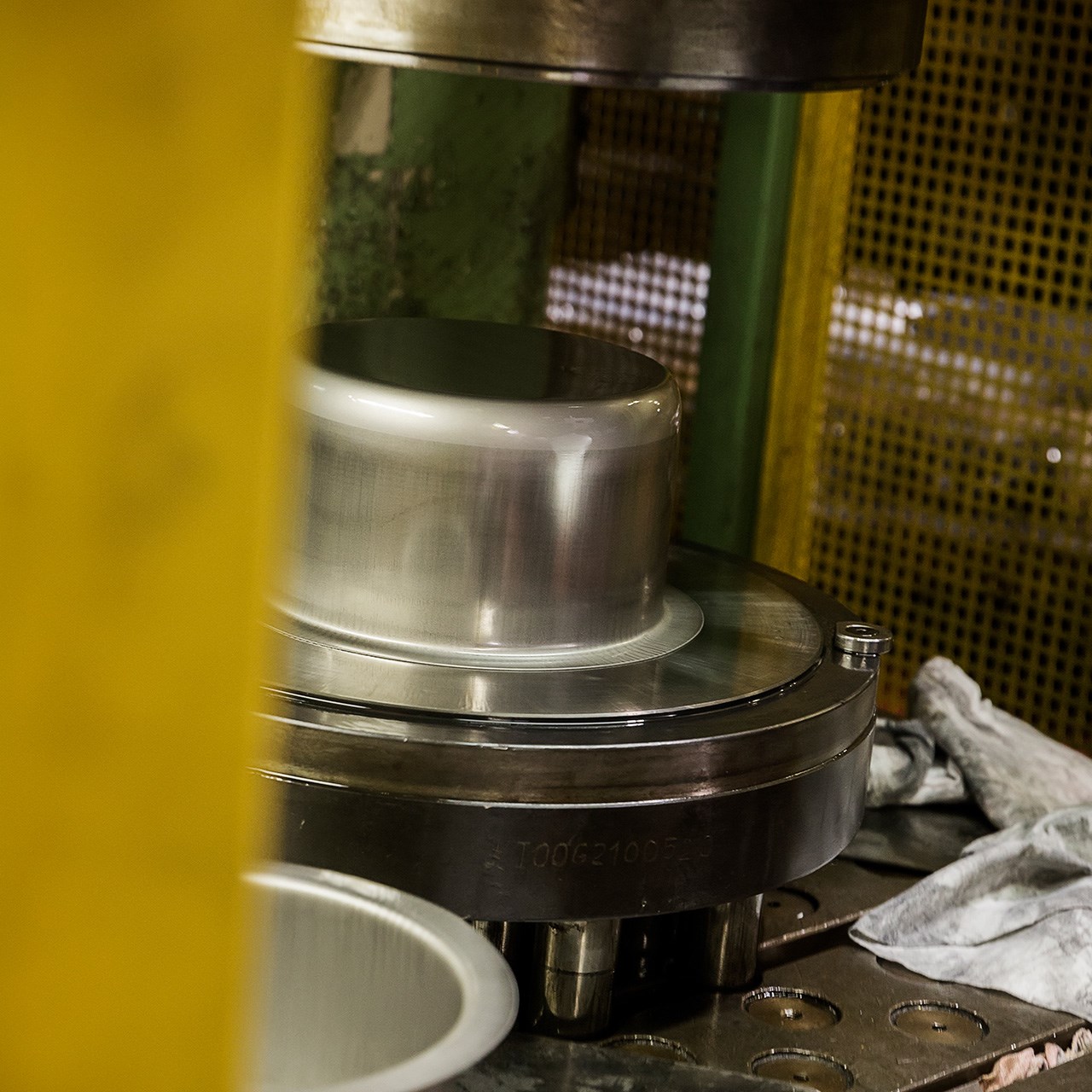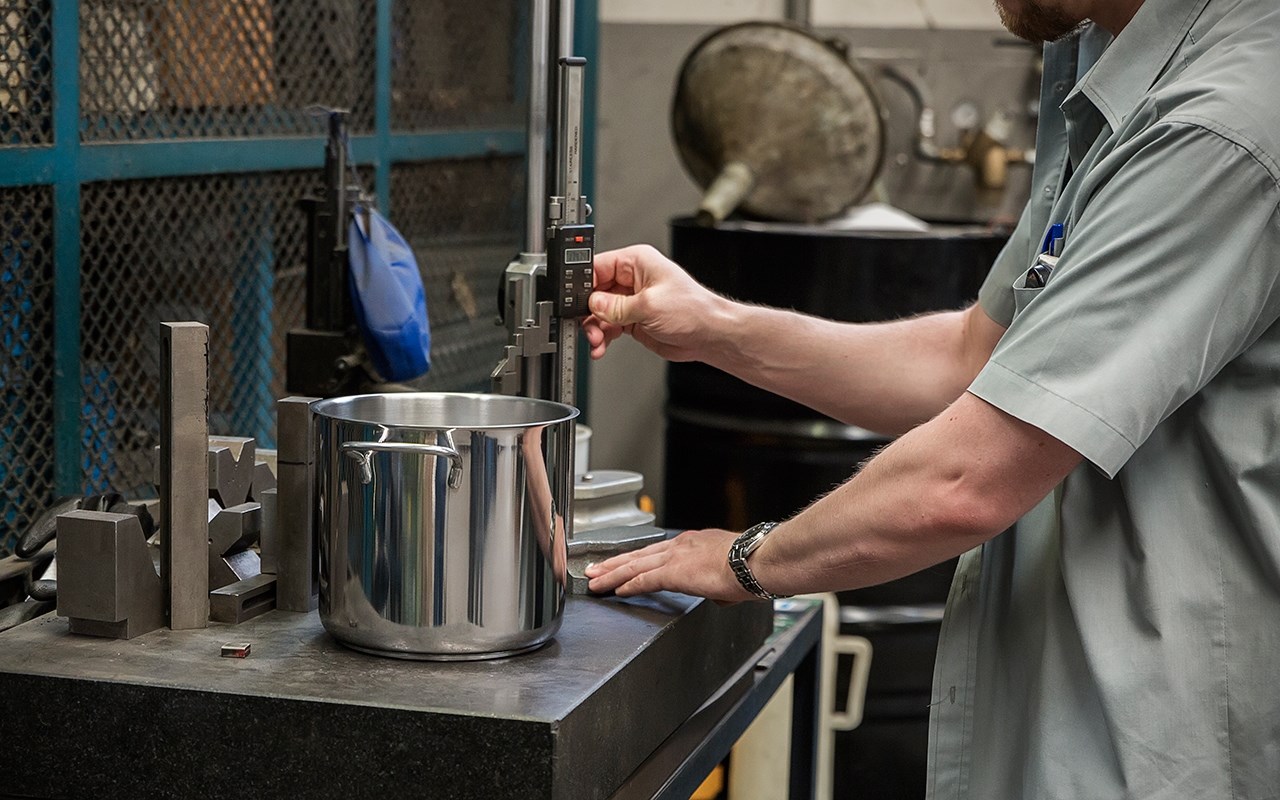Meet the Italian company that manufactures more than 120,000 units of cutlery and 5,000 pans per day. Pintinox has a long tradition in shaping stainless.
In Lumezzane, Northern Italy, man has been making pots and pans, knives and weapons for thousands of years. The first archeological traces of metallurgical activity found on site are dated 1000 BC. But here, the Iron Age has never ended.
This is also where Pintinox, a manufacturer of cookware, is located and operates with the third generation of the Pinti family at its helm. The recent economic crisis swept away many stainless steel manufacturers. But as you enter the lobby of Pintinox’s factory, the first thing you notice is the bronze head and strong shoulders of the company’s founder, Giacomo Pinti.
Hanging on the wall, there are a number of group shots of the local basketball team in its golden age in the late seventies, when it was owned and sponsored by the Pinti family. Only a keen eye would recognize in one of these team pictures, the face of Bill Laimbeer, two times NBA winner and legendary player of the Detroit Pistons, who played for Pintinox Brescia in his early years. Our host, Roberto Pinti, meets us with Production Manager Ruggero Borghetti. Together they do the honors and drive us inside the heart of the factory – the production lines.
Inside out like a sock
“We have set the machine to show you how we tested Core 4622,” says Borghetti, while he leads us through the noisy workshop. The constant sound of engines fills our ears. Borghetti stops in front of a press. The metalworker in charge holds out a stainless disc and measures it with calipers. “This is a starting disc,” says Borghetti, as I look at my face, which mirrors in the steel. “First of all, we have to pass the disc through these two oiled rollers. If the disc isn’t well oiled on both sides, it could seize up the machine and stop the production.”


The disc is leaning on this ring, sustained by a column that hides the fixed punch. The die falls from above and the stainless disc is forced to stick to it by the punch. This is the first deep drawing: its result is a 24 cm diameter pan. Now we need a second deep drawing action; the pan is placed on a smaller die, re-punched and literally turned inside out like a sock. The diameter is 20 cm, but the pot is taller. The deep drawing operations are instantaneous. Punch pressure makes stainless steel look like melted wax. The pot is stamped. Borghetti visually inspects the surface: he looks pleased. No evident roping.
Important dimensions
“The dimension of the pot depends on the thickness of the disc,” says Pinti. “That’s why we check it with calipers.” If the disc is too thick, it may get stuck in the die, but if it is too thin, the pot will lose mass and value. “In this part of the plant we produce customized cookware. Our fully automated lines for pots and pans are located in our Spanish plant. The automated lines that you see here are for cutlery.” A long line of rough forks runs on a conveyor belt, a tireless robot picks, checks and drops every single piece. This is the future. “Outokumpu is one of our long-standing suppliers. We have had a successful collaboration throughout the years,” says Pinti. “Working on the product together with your supplier is not enough – there are many other issues that factor in, like exchanging technical data and the importance of certifications. Today ISO9001 is just preliminary; customers need certifications for all the raw material used. If there isn’t a tight and transparent collaboration and the supplier doesn’t provide an external audit when you need it, you risk losing a customer. This does happen, but not with Outokumpu.” While we are leaving the factory, I notice piles of cutlery scraps in the plant yard. Pinti says: “Do you know what I like the most about stainless steel? It’s fully recyclable.”
The high-chromium ferritic stainless steel Core 4622 was been accepted into European standard (EN 10028-7) in July 2016. Core 4622 has excellent deep-drawability and is virtually roping free. Read more about Core.
